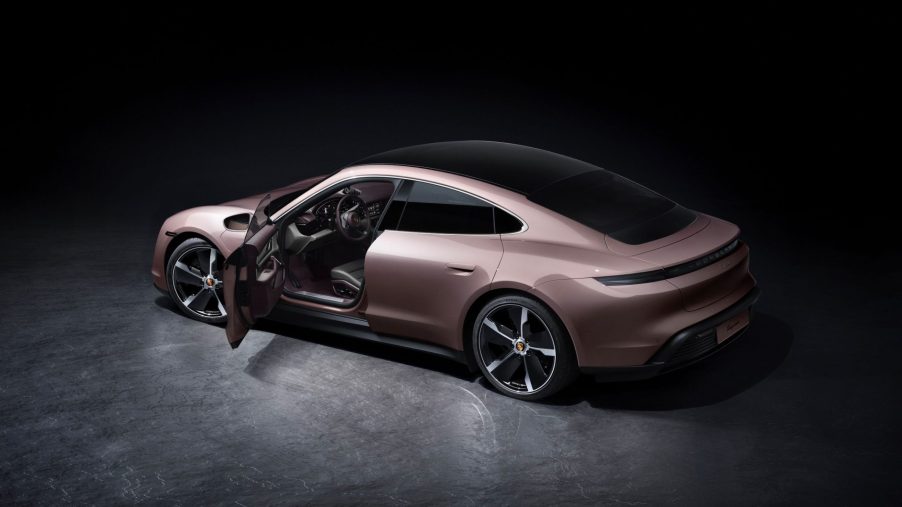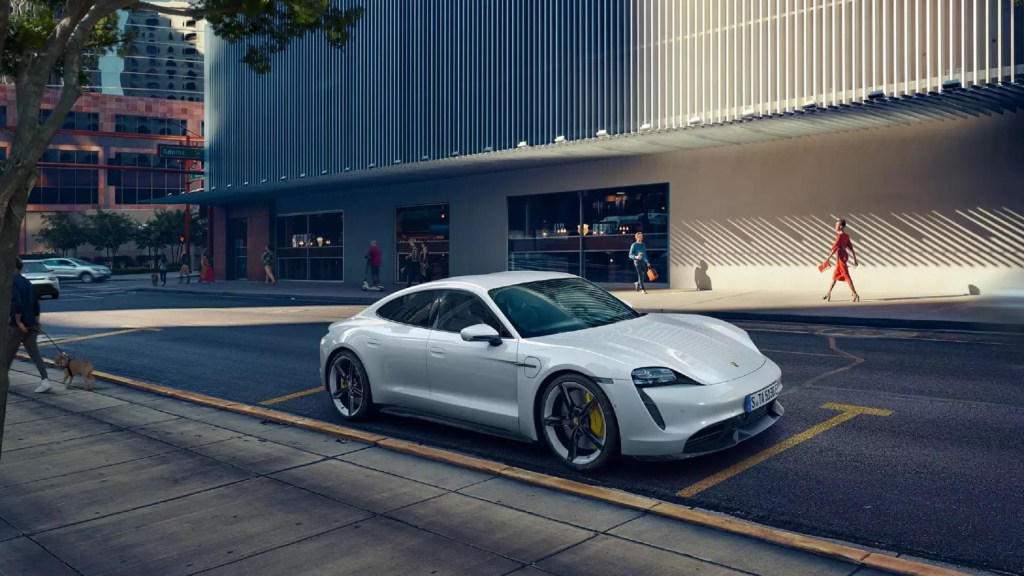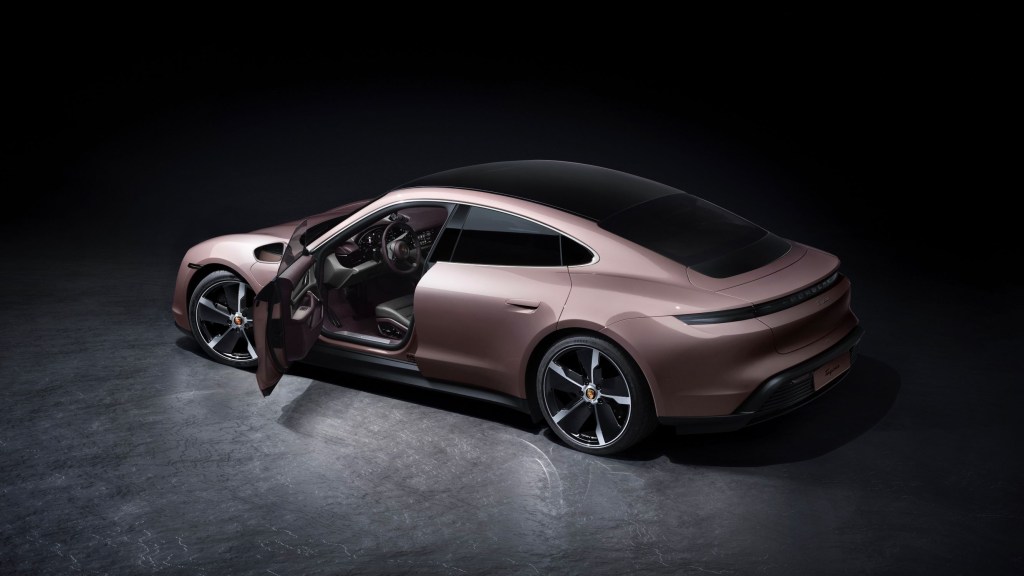
The EPA Claims the 2021 Porsche Taycan Has More Range
Fuel-efficiency, or rather, energy-efficiency claims are important consumer concerns, especially for those buying EVs. And compared to some of its rivals—especially Tesla’s models—the Porsche Taycan didn’t fare as well in EPA testing. However, for the 2021 model year, it appears the Taycan has found some extra range. But has it?
The EPA has new estimates for most of the 2021 Porsche Taycan lineup

The Porsche Taycan lineup has a new battery option for the 2021 model year, Car and Driver reports. Previously, all models came standard with a 93.4-kWh battery pack. And while the Taycan Turbo and Turbo S models still do, the 2021 4S trim now comes standard with a 79.2-kWh pack. Buyers can still get the 93.4-kWh pack as an optional extra, though. But while the larger pack’s capacity hasn’t changed, the EPA estimates have.
In standard form, the 2020 Porsche Taycan 4S, the previous base-level trim, is rated at 203 miles, InsideEVs reports. However, for 2021, its range estimate is 227 miles. It’s a similar story with the Turbo and Turbo S models. The 2020 models are rated at 201 miles and 192 miles, respectively. But for 2021, the EPA claims they can go up to 212 and 201 miles, respectively, SlashGear reports.
As of this writing, the EPA hasn’t released official estimates for the 79.2-kWh 2021 Porsche Taycan 4S. However, according to the EU’s WLTP standard, the smaller-capacity 4S has up to 254 miles of range, InsideEVs reports. Based on the WLTP estimation of the 93.4-kWh 4S’s range—288 miles—a 200-mile EPA estimate seems likely.

Besides the new battery pack, the Porsche Taycan lineup has a new base rear-wheel-drive model for 2021. Like the 4S, it comes standard with the 79.2-kWh pack, with the larger pack an optional extra. As of this writing, official EPA estimates aren’t available. However, the EU estimates it can do 301 miles with the larger pack and 268 miles with the smaller one, InsideEVs reports.
Will these updated Porsche Taycan range estimates be real-world accurate?
It’s worth pointing out that, although Porsche claims the larger Taycan battery pack has a 93.4-kWh capacity, the “usable” amount is about 83.7 kWh, Car and Driver reports. That’s one reason why Tesla’s EVs can achieve higher EPA figures: more usable battery capacity.
However, while a Model S has an impressive range on paper, that hasn’t always translated into the real world. In contrast, Porsche Taycans have often out-performed what the EPA claims they can do.
For example, in Car and Driver’s GPS-verified 75-mph highway test, a 2020 Taycan Turbo S used 48% of a charge to do 100 miles. The accompanying 2020 Tesla Model S Performance used 45% of its charge to travel the same distance. That works out to a 209-mile range for the Porsche and a 222-mile range for the Tesla. However, the Model S Performance, according to EPA testing, should be able to do over 100 more miles.
And Car and Driver isn’t the only publication that has beaten the EPA’s figures with a Porsche Taycan. Roadshow, Road & Track, The Drive, and Edmunds all had their Taycans travel noticeably further than the official estimates. In Edmunds’s case, the tested Taycan 4S went further than a charge than a Tesla Model Y—according to EPA estimates, it should be the other way around.
EV range tests still need some work
These discrepancies boil down to the EPA testing methods. Or rather, the EPA-approved testing procedures that the automakers perform themselves.
These tests are run on dynamometers that mimic, but aren’t actually, real-world driving conditions and speeds, Car and Driver explains. The EPA can and does test a percentage of production cars on its own, but doesn’t have the resources to test all of them, Jalopnik reports. And real-world testing is mostly limited to catching cheating devices, R&T reports.
Admittedly, the gap between real-world fuel-efficiency and tested efficiency has shrunk significantly, Consumer Reports points out. However, the testing procedures for EVs and hybrids are relatively new, Edmunds reports. And they incorporate adjustment factors that were first set when electric cars were fairly rare, Roadshow reports. These factors can be further adjusted by the automakers themselves using methods built into the regulations, Car and Driver reports.
All of this is to say that there are many reasons why ‘your mileage may vary’ is posted on window stickers and ads. And that includes the ones for the 2021 Porsche Taycan lineup.
Follow more updates from MotorBiscuit on our Facebook page.


